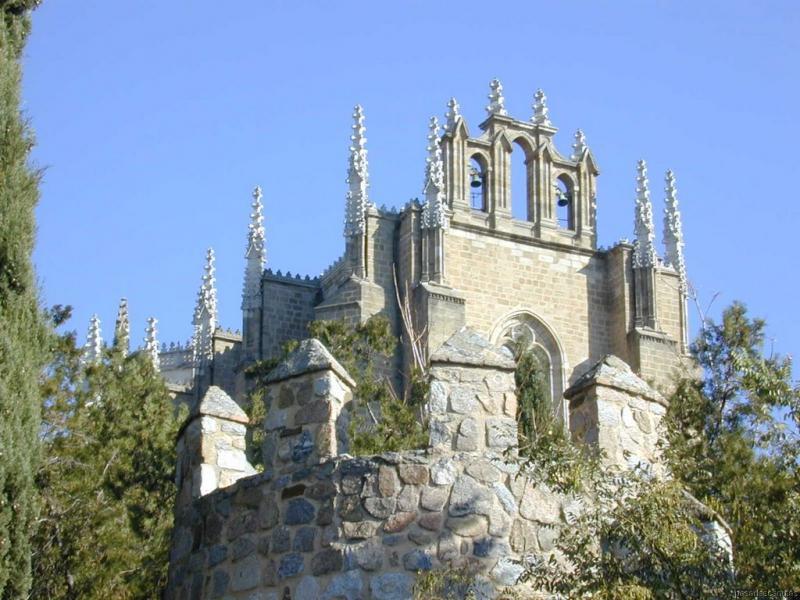Toledo, Castilla-La Mancha, Spain
Suggest Place to Visit
4816
Track to location with GPS |
 |
Old history
The first known fixed settlement in the city is a series of forts, on which later the walled Celtiberian city was built, one of the most important centers of the Carpetani. One of these first settlements is located in Cerro del Bú (on a hill on the left bank of the Tagus River), from which numerous remains have been obtained in excavations carried out, and which can be seen in the current Museum-Hospital of Santa Cruz , in Toledo.
In the year 193 a. C. and after a great resistance, Marco Fulvio Nobilior conquers the city. The Romans rebuilt it and named it Toletum, in the province of Carpetania. The city developed an important iron industry that led it to mint money. The area where the city was based underwent a profound process of Romanization, as witnessed by the numerous remains of Roman villas, especially on the banks of the Tagus.
The Romans left numerous vestiges on the Toledo face, such as an imposing aqueduct, of which only the bases on both sides of the Tagus are preserved, a Roman road, part of which can be seen on the slopes of the hills on the left bank of the river. river, and a circus, located in a public park and partially unearthed. There are many other vestiges that, despite being considered missing in many cases, are very likely to be found in the subsoil of the city, such as the theater (located on the site near the circus and currently occupying a school), the amphitheater (under the Covachuelas neighborhood), an important hydraulic infrastructure (such as the vestiges that remain next to the door where the Cristo de la Luz mosque is accessed), numerous roads (such as those recently found approximately 7 meters deep under the garden of the previously mentioned Mosque), as well as hot springs, spillways, villas, etc.
It should be noted that most of these historical constructions were dismantled, the ashlars being used for the construction of other buildings and for the wall that surrounds the city, although possibly the greatest archaeological wealth of Toledo is buried under its subsoil.
Medieval history
See also: Visigothic Kingdom of Toledo and Taifa of Toledo
Toledo Cathedral.
After the first Germanic incursions, the old walls were rebuilt for defensive purposes; Despite this, in 411 the city was conquered by the Alans, who were in turn defeated by the Visigoths in 418. Once he had defeated his rival Agila, Atanagildo established his court in the city and later, with Leovigildo, became the capital of the Hispano-Godo kingdom and archbishopric, with which it acquired great civil and religious importance (as the Councils of Toledo prove). Very close to Toledo, in the town of Guadamur, the Guarrazar Treasury was found, an exceptional set of votive crowns of the Visigoth kings.
In 711 it was conquered by Táriq ibn Ziyad and subjected to Muslim rule. The taking of the city was carried out without difficulties, through capitulation, since a large part of the population had fled. [18] The Arabs called it Tulaytula (in Arabic e 1591; e 1604; e 1610; e 1591; e 1604; e 1577;).
The predominance of a large Mozarabic population immediately turned it into a focus of continuous concern for Córdoba. In 797 (according to Claudio Sánchez-Albornoz in 807 and 800 according to other sources), during the emirate of Alhakén I, an uprising against Córdoba broke out. The emir sent the muladi from Huesca Amrús ben Yusuf (called Amorroz in Christian chronicles) to subdue the city. Amrús decimated the local Muladis through a cruel ruse. This is the event known as the day of the pit. Amrús organized a banquet in the governor's palace and invited the main Muladids of the city to dinner. At the doors of the residence, he had executioners stationed and, as the guests arrived, their throats were cut, and the body was thrown into a ditch (hence the name by which the episode is known). In this way, the emir managed to subdue the people of Toledo for a time. However, they rebelled again in 811 and 829, after his death.
Finally, Abd al-Rahman III crushed the endemic rebellion in the city of Toledo in July 932, after a two-year siege, subjecting it to the Cordovan caliphate. When the caliphate disintegrated in the 11th century, Toledo became an important taifa kingdom, which nonetheless had to pay outcasts to the kings of Castile to maintain its independence.
General view of Toledo.
On May 25, 1085, Alfonso VI of León and Castilla entered Toledo, through a prior agreement with the Taifa that governed it. By means of the capitulation agreement, the Castilian and Leonese king submits the kingdom, guaranteeing the security of their people and property to the Muslim settlers. The king granted their own charters to each of the existing minorities: Mozarabs (Toledo was an important Mozarabic center, with its own liturgy, the Hispano-Mozarabic, which is still preserved), Muslims and Jews, later recast by Alfonso VII in the Fuero de 1118. After the conquest of the city, the period of greatest splendor of Toledo ensued, of great cultural, social and political intensity. The Toledo School of Translators, flourishing during the 12th and 13th centuries, as well as the numerous civil and religious works of art, which left an important mark on the city.
After the conquest, the religious practice of the Jewish and Muslim communities was tolerated, but this tolerant attitude did not last long. The Christians built the new cathedral on top of the main mosque, which in turn stood on the old Visigothic cathedral.
During the Castilian civil war, Toledo fought alongside Pedro I and, after suffering a long siege, was taken in January 1369. Throughout the entire Middle Ages the city grew: in the 14th century it received a fair privilege and in the XV became one of the main Castilian cloth producers, an activity that was added to the already existing ones of minting coins, manufacturing weapons, silk industry, etc. The Jewish population actively participated in this expansion, until their expulsion in 1492.
TOLEDO is one of the largest provinces in Spain, located approximately in the center of the peninsula, in the community of Castilla La Mancha of which it is the capital, on the southern plateau.
View of a mill in Consuegra
You only have to see the first mill and the first sign ´´Here is cheese´´, and you will already know that you are in La Mancha. And it is that this land is unmistakable; just as Cervantes painted it in Don Quixote, exactly the same as then.
Puerto Lapice The province of Toledo is famous above all for two reasons: The first for its mills and for being one of the places where Cervantes set the adventures of Don Quixote de la Mancha; and secondly, for housing the beautiful city of Toledo, declared a World Heritage Site by UNESCO.
Castillo Guadamur, Guadamur (Toledo) Other interesting towns in the Toledo province are Talavera de la Reina, with its Collegiate Church of Santa María la Mayor; Ocaña, with its Gothic-Mudejar church of San Juan Bautista; Guadamur, with a beautiful castle; and Oropesa, in whose 14th-century castle palace the local Parador de Turismo is located.
Toledo city, a world heritage site
ToledoToledo is one of the Spanish cities with the greatest monumental wealth. Known as the “city of the three cultures”, due to the coexistence of Christians, Arabs and Jews for centuries, Toledo preserves behind its walls an artistic and cultural legacy in the form of churches, palaces, fortresses, mosques and synagogues. This great diversity of artistic styles turns the old town of the La Mancha capital into an authentic open-air museum, a fact that has allowed it to be declared a World Heritage Site by UNESCO.
Typical Toledo Street The labyrinth of streets that make up the historic center of Toledo is only limited by walls in which innumerable doors were opened. Synagogues, mosques and churches open up to the passage in the narrow streets of Toledo, characterized by the mixture of artistic styles.
The Burial of Count Orgaz, by El Greco
If there is a proper name that defines Toledo, it is precisely El Greco (16th-17th centuries). Its House-Museum, a palace set at the time, exhibits some of the best works of this painter who made the city famous worldwide.
DON QUIXOTE IN THE PROVINCE OF TOLEDO:
Miguel de Cervantes Touring the same natural settings where Cervantes set the adventures of Don Quixote, the traveler can enjoy in Consuegra those windmills confused by Don Qujote with giants, in Villafranca de los Caballeros of his famous clay crafts and for lovers of nature, you will be able to observe a great diversity of aquatic birds in the Manchego wetlands of Toledo, so binoculars will have to be part of your luggage.
El Toboso Singular popular architectures such as silos, typical underground dwellings that you can find in Villacañas or the Miguel Esteban Ornithological Reserve. And arriving at El Toboso, discover the innumerable corners of a La Mancha town famous for being the cradle of Dulcinea.
Castles and mills
Servando Castle The province of Toledo has a large number of fortifications. In few places like here the landscape, sometimes flat, sometimes steep, is so frequently dotted with the imposing silhouette of great castles. The castles of Toledo make up a group of exceptional historical-artistic interest, of Arab, Roman or medieval origin, with different degrees of conservation, all of them imposing.
Castle of Orgaz Among the most prominent are the castles of San Servando in Toledo, Consuegra (with the famous windmills), Guadamur (possibly the most beautiful in the province), San Martín de Montalbán, Escalona and Oropesa. We must not fail to mention the walled enclosures of Toledo and Talavera de la Reina, with their doors of Muslim and Mudejar origin.
Thanks to the ingenious hidalgo Don Quijote de la Mancha we have knowledge of the mills that formerly were deployed in the high areas of the towns of the La Mancha region. They were called wind because thanks to it they could crush the grains of the harvested cereals. The upper part of the mill, black in color, formed a dome and acted as a roof, it was revolving. This made it possible to orient the blades of the mill in the direction of the wind. The blades, which were made of wood, were covered by a large cloth, and the wind moved them like the sails of a sailing ship move.
DO NOT forget to visit the Molinos de Consuegra.
Nature and active tourism
Cabañeros National Park In the south of the province, at the foot of the Montes de Toledo, is the Cabañeros National Park, a protected area that combines Mediterranean forest in the mountains and pastures in the extensive plains.
And if you like sports and adventure, be sure to visit the place
And if you like sports and adventure, be sure to visit ´´El Chorro´´, a waterfall of more than 15 m in the municipality of Los Navalucillos (within the extension of the Cabañeros National Park).
The Barrancas de Burujón. One of the most impressive natural corners of the province of Toledo. (Photo by Ulises) In the municipality of Burujón, a Toledo town located about 30 km from the capital, we can find one of the most beautiful, impressive and surprising natural places in the province. The Barrancas de Burujón are spectacular clay cuts that have been formed by the erosion of the wind and the waters of the Tagus on sediments of 25 million years ago.
The rural environment of Toledo offers in addition to tranquility to the visitor, surprising scenarios for all those who want to practice the so-called sports tourism or active tourism: hiking, cycling, equestrian routes, canoeing, climbing, bungee jumping, paragliding ... without forgetting hunting and fishing; alternating these activities with ecotourism and cultural tourism, which allow us the knowledge, conservation and respect for Nature, in addition to the contemplation of the great amount of artistic, archaeological, historical, ethnographic or folkloric resources of the different regions of our Community Autonomous
Gastronomy and parties
Manchego cheese Toledo's gastronomy has various specialties based on game products, such as stewed partridge, Toledo-style quail or venison (deer) with mushrooms. With the rest of the provinces of La Mancha it shares the pisto (made from pepper, tomato and onion), the Castilian soup or the crumbs. To top it off, the famous Manchego cheese and marzipan (ground almond paste and sugar). These dishes can be accompanied with La Mancha and Méntrida wines, both with Denomination of Origin.
Toledo: Festivities and Folklore
On the first of May the famous Pilgrimage of the Virgen del Valle takes place, however the best known festival in Toledo is that of Corpus Cristi, when the exceptional Custody of the s. XVI that houses in its Cathedral. In August the festivities take place in honor of the Virgen del Sagrario, an ancient tradition and very popular character.
Also noteworthy are the highly typical festivals celebrated in neighboring towns within the Toledana province, such as the Olive Tree Festival in Mora de Toledo, the last Sunday in April, and those of San Isidro in Talavera from May 15 to 18. with its processions, dances and shows, or the Danzantes y Pecados Fiestas, of very remote origins and high symbolic value in Camuñas.
In mid-June the friendly Friendship Festival is celebrated in Polan and at the end of November in Consuegra the Saffron Rose Festival, which, due to its spectacular nature, attracts many visitors.
Comments
We don´t have yet any comments about:
Toledo
Toledo
Be the first to leave a comment as it is very important to inform other people
Outros locais a visitar
Within a radius of 20 km from:Toledo
Castelo San Servando (Toledo) |
| 0,9 Km |
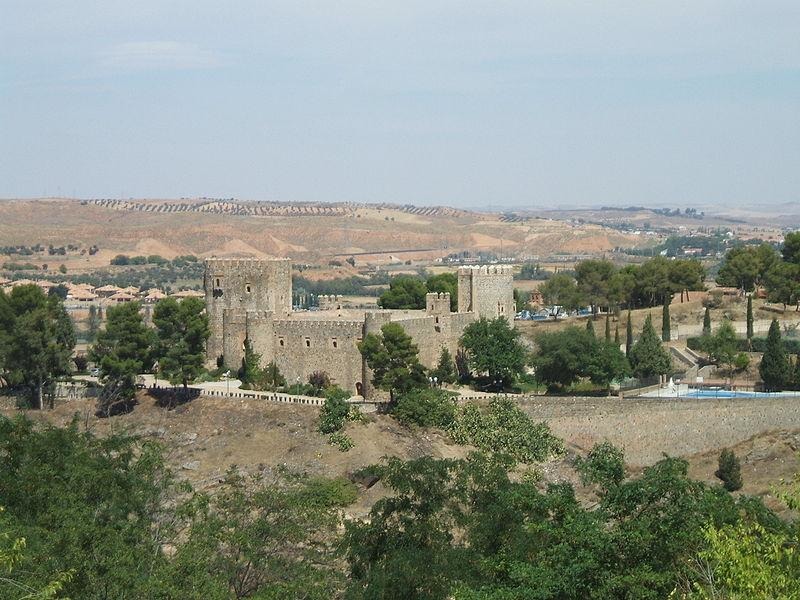 |
Ponte de Alcântara - Toledo |
| 0,9 Km |
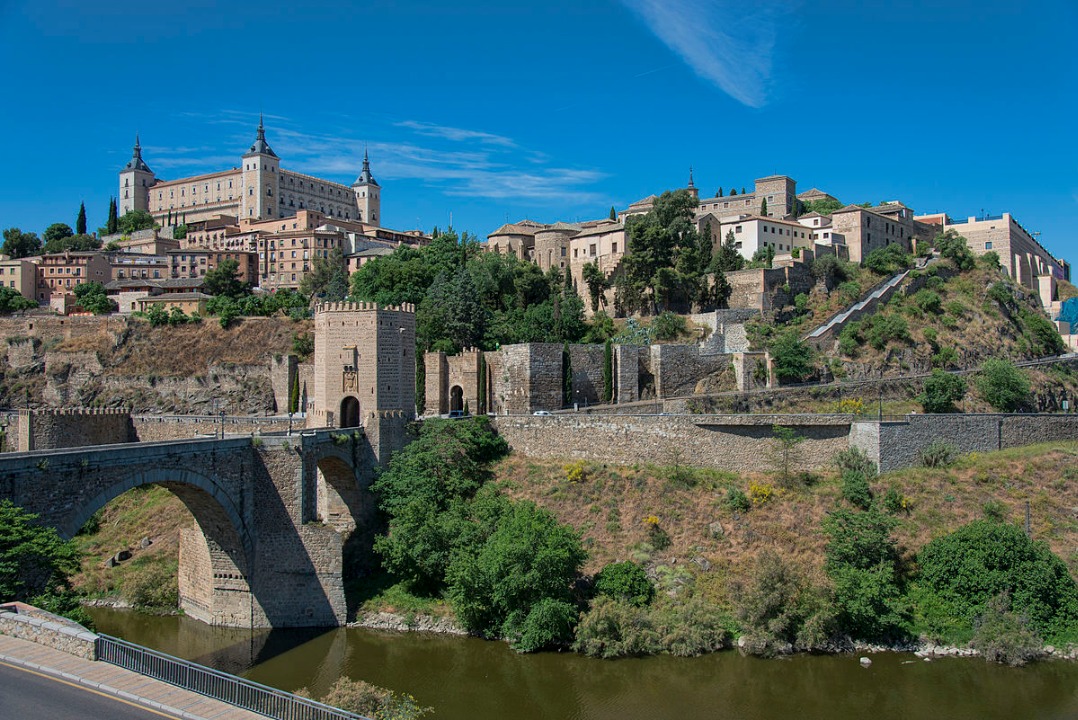 |
Hospital de Tavera |
| 1,0 Km |
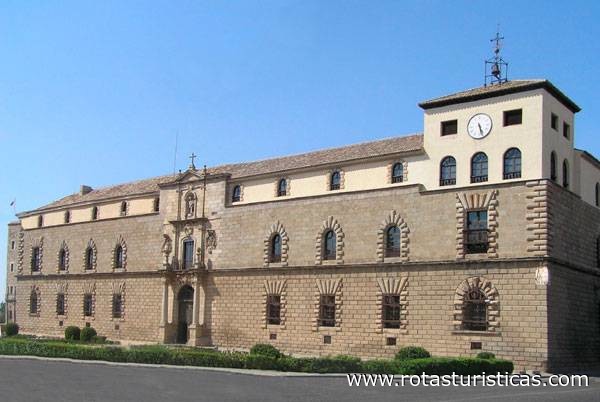 |
Museo De Santa Cruz |
| 1,1 Km |
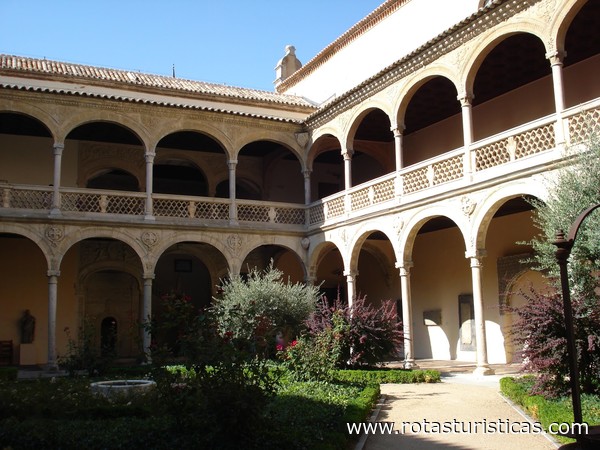 |
Alcazar de Toledo |
| 1,3 Km |
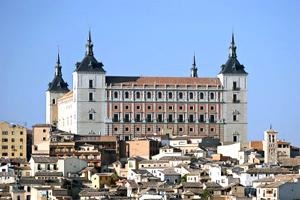 |
Alcázar of Toledo |
| 1,3 Km |
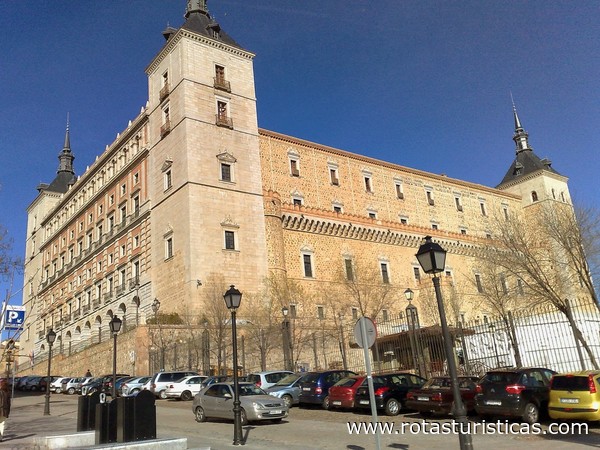 |
Sinagoga de Santa María La Blanca |
| 1,9 Km |
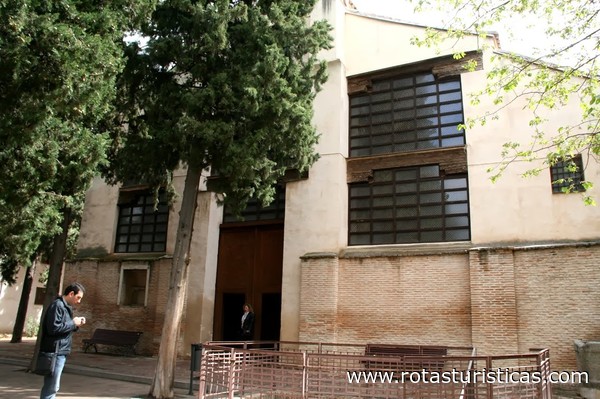 |
Sinagoga de Trânsito (Toledo) |
| 1,9 Km |
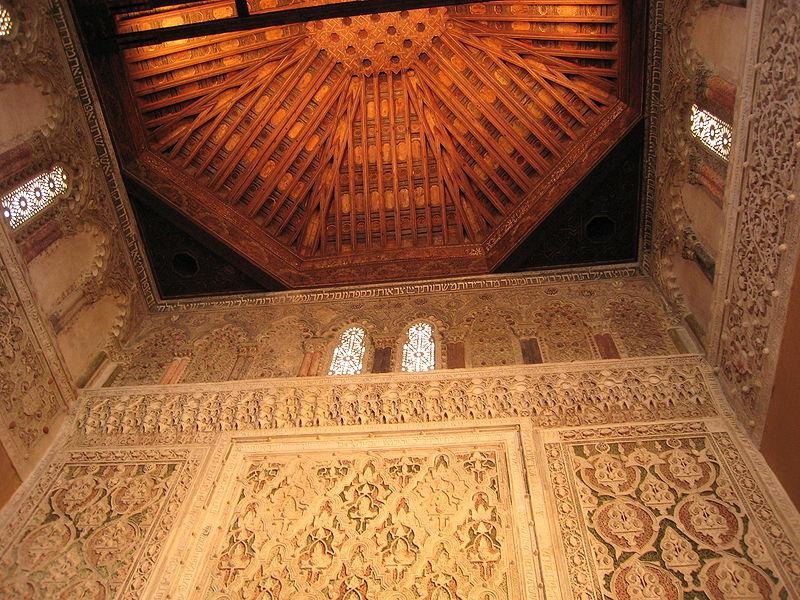 |
Castelo de Guadamur |
| 13,0 Km |
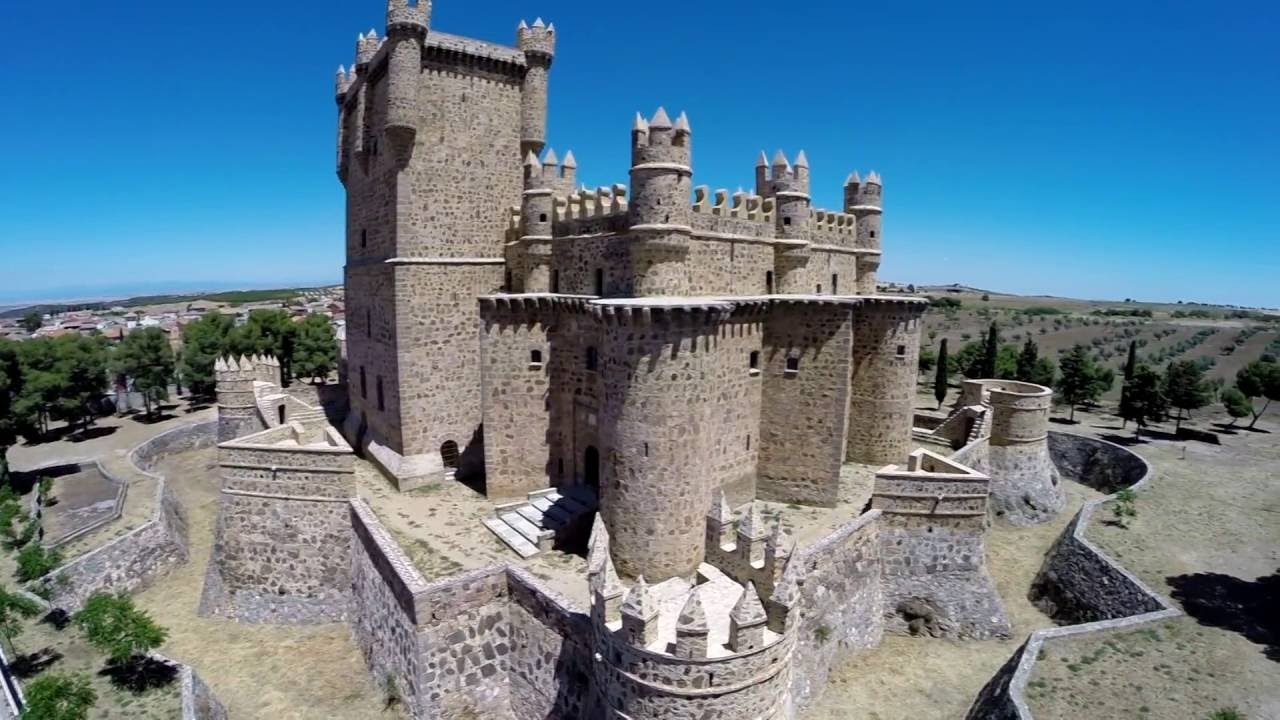 |
Hotel reservation near Toledo within a radius of 20 km
Why to book with CLUBE TRAVEL
The best prices
Our partnerships with the world´s largest operators offer research on the best market prices.
More options
At Rotas Turisticos you can book the hotel, buy the air ticket, book the transfer from the airport to the hotel and vice versa, book the local excursions, rent the car, take travel insurance and consult the places to visit and where to go.
Holiday Tips & Destinations
Hundreds of holiday destinations with all the options that allow you to easily choose the destination that best suits your dream vacation.
CLUBE TRAVEL
Links


